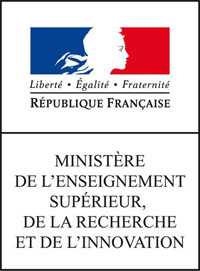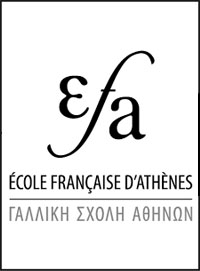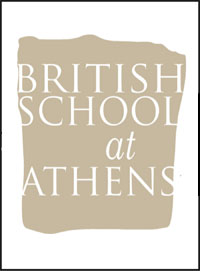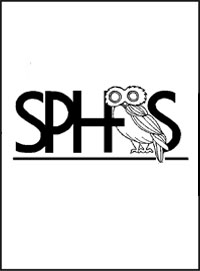Athens - Agora - 2023
Informations Générales
Numéro de la notice
19631
Année de l'opération
2023
Chronologie
Mots-clés
Nature de l'opération
Institution(s)
Localisation
Toponyme
Agora antique, Athenian Agora
Agora antique, Athenian Agora
Notices et opérations liées
20232024
Description
Athenian Agora. John Papadopoulos (UCLA) and Debby Sneed (California State University) report that work was undertaken between June and August 2023.
This season marked the first excavation of the area beneath the former building at 14 Agiou Philippou Street, which covered much of the central portion of the Stoa Poikile (or Painted Stoa), as well as part of the Middle Byzantine neighborhood in this area. (Fig. 1). The area beneath this building (labelled Beta Kappa) was subdivided into three trenches, determined by the geophysical survey under the general direction of Dr. Brian Damiata (UCLA), immediately prior to the excavations (Fig. 2).
Beta Kappa North. Excavations started at the foundations of the early modern constructions and covered an area of 77 square metres. The broad horizons uncovered in BK North in 2023 included: Early Modern (18th-20th century); Ottoman (15th-18th century); Late Byzantine/Medieval (13th-15th century); and Middle Byzantine (10th-12th century). Two refuse pits were also found, one with animal horns and ceramic sherds mixed inside different fills and one with a stony fill and mixed ceramic material, as well as a piece of an Ionic column capital. The latter is the only datable context in the area, dated between the eleventh and twelfth centuries AD, with at least one Islamic import (Fig. 3).
Beta Kappa South. Section BK South covered an area measuring approximately 11 x 5 m. Before the season began, the geophysical survey revealed a square feature (Fig. 4) in the middle of the trench (Pit A) and suggested that the feature extended to a depth of about 1.5 to 2.0 meters; the uppermost course of this feature was visible on the surface before we began excavations. Pit A measures about 1.85 meters by 1.83 meters (at its outer limits). The stone-lined square pit, which is not fully excavated by the end of the season, contained a mixed fill including copious amounts of iron slag (including hearth bottoms), along with stones (unworked fieldstones, modern marble with binding material on them, and schist slabs), gravel, modern plastics (some datable to the 1950s), and small parts of rope, together with molded bricks. Associated ceramics are dated from the Archaic period to the modern era, with some prehistoric material. Other finds included animal bones and coins (including two two Greek coins dated, respectively, to the 1960s and 1982, as well as a Bulgarian coin dated to 2000). Elsewhere in this area, excavators found pieces from a human skull and a concentration of murex shells, which point to dye production that was apparently still active in this part of the Agora in the Middle Byzantine period (11 th to 13th centuries CE).
Beta Kappa West. This trench was divided conceptually into two areas with the appearance of two important features. The first was Pit B in the northwest area of the trench and the second was the entire southeastern half of the trench. An articulated equid skeleton with iron horseshoes in a mixed modern context was found, next to a coarseware vessel (Fig. 5). Another pit was also found in this area: a circular stone-lined pit that contained mostly modern material, associated with a nineteenth century flour mill.
This season marked the first excavation of the area beneath the former building at 14 Agiou Philippou Street, which covered much of the central portion of the Stoa Poikile (or Painted Stoa), as well as part of the Middle Byzantine neighborhood in this area. (Fig. 1). The area beneath this building (labelled Beta Kappa) was subdivided into three trenches, determined by the geophysical survey under the general direction of Dr. Brian Damiata (UCLA), immediately prior to the excavations (Fig. 2).
Beta Kappa North. Excavations started at the foundations of the early modern constructions and covered an area of 77 square metres. The broad horizons uncovered in BK North in 2023 included: Early Modern (18th-20th century); Ottoman (15th-18th century); Late Byzantine/Medieval (13th-15th century); and Middle Byzantine (10th-12th century). Two refuse pits were also found, one with animal horns and ceramic sherds mixed inside different fills and one with a stony fill and mixed ceramic material, as well as a piece of an Ionic column capital. The latter is the only datable context in the area, dated between the eleventh and twelfth centuries AD, with at least one Islamic import (Fig. 3).
Beta Kappa South. Section BK South covered an area measuring approximately 11 x 5 m. Before the season began, the geophysical survey revealed a square feature (Fig. 4) in the middle of the trench (Pit A) and suggested that the feature extended to a depth of about 1.5 to 2.0 meters; the uppermost course of this feature was visible on the surface before we began excavations. Pit A measures about 1.85 meters by 1.83 meters (at its outer limits). The stone-lined square pit, which is not fully excavated by the end of the season, contained a mixed fill including copious amounts of iron slag (including hearth bottoms), along with stones (unworked fieldstones, modern marble with binding material on them, and schist slabs), gravel, modern plastics (some datable to the 1950s), and small parts of rope, together with molded bricks. Associated ceramics are dated from the Archaic period to the modern era, with some prehistoric material. Other finds included animal bones and coins (including two two Greek coins dated, respectively, to the 1960s and 1982, as well as a Bulgarian coin dated to 2000). Elsewhere in this area, excavators found pieces from a human skull and a concentration of murex shells, which point to dye production that was apparently still active in this part of the Agora in the Middle Byzantine period (11 th to 13th centuries CE).
Beta Kappa West. This trench was divided conceptually into two areas with the appearance of two important features. The first was Pit B in the northwest area of the trench and the second was the entire southeastern half of the trench. An articulated equid skeleton with iron horseshoes in a mixed modern context was found, next to a coarseware vessel (Fig. 5). Another pit was also found in this area: a circular stone-lined pit that contained mostly modern material, associated with a nineteenth century flour mill.
Auteur de la notice
Georgios Mouratidis
Références bibliographiques
Unpublished field report
Légende graphique :
![]() localisation de la fouille/de l'opération
localisation de la fouille/de l'opération
![]() localisation du toponyme
localisation du toponyme
![]() polygone du toponyme Chronique
polygone du toponyme Chronique
Fonctionnalités de la carte :
![]() sélectionner un autre fond de plan
sélectionner un autre fond de plan
![]() se rapprocher ou s'éloigner de la zone
se rapprocher ou s'éloigner de la zone
![]() afficher la carte en plein écran
afficher la carte en plein écran
Date de création
2024-09-12 12:18:36
Dernière modification
2025-01-03 11:29:14
Figure(s)
Fig. 2/ Representative output from GPR surveying. Depth-slice image for 0.5 m depth. Red denotes presence of a strong reflector of GPR energy. Image prepared by Brian Damiata.
Fig. 3/ Southern area of BK North, showing the Middle Byzantine pit (Pit C) at lower left. Foundation 1 at right and Foundation 2 at left. Photo by Craig Mauzy (4 August 2023).
Fig. 4/ Representative output from FDEM surveying. Contour map of apparent ground conductivity for the longest dipole (i.e., maximum depth of interrogation of ~2-3m). Red and blue denote high and low conductivity, respectively. Image prepared by Brian Damiata








